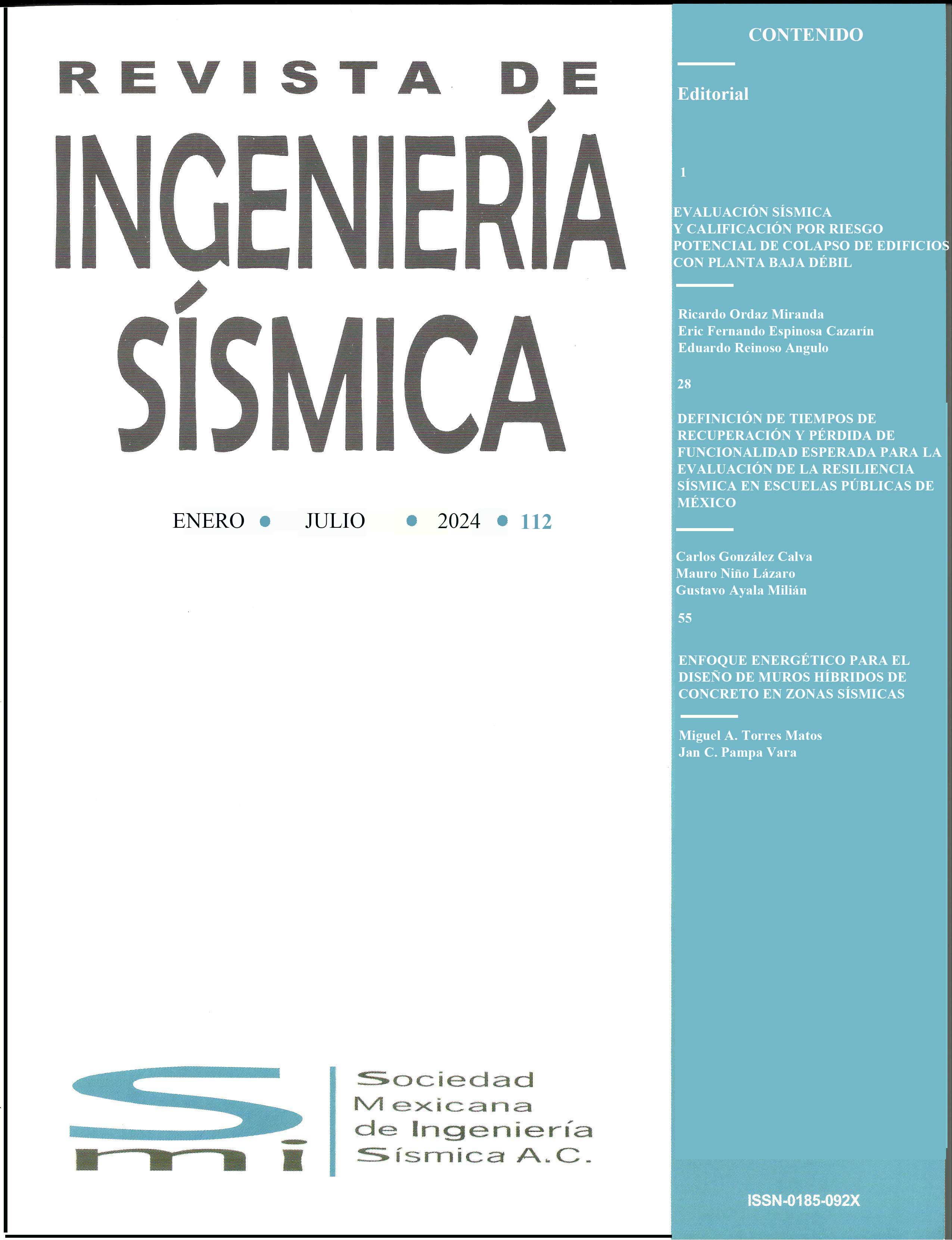INTERPRETATION OF DAMAGE AND COLLAPSES IN BUILDINGS OBSERVED IN MEXICO CITY IN THE SEPTEMBER 19 EARTHQUAKE
DOI:
https://doi.org/10.18867/ris.101.528Abstract
This study evaluates the damage and collapses of buildings in the September 2017 earthquake in Mexico City. These buildings were of the frame type, they were also subjected to the September 1985 Mexico and little or no damage was observed in that event. It was found that the spectral demands for typical records registered in 1985 and 2017 were not much different, which suggests the need to explain why these buildings collapsed or had severe damage in 2017 and not in 1985. This building behavior was analyzed using a seismic damage index previously proposed by the author, Id, which considers the effect of cumulative damage. Index Id was computed for typical 1985 and 2017 ground motion records, as well as for a record resulting of the combination of both the 1985 record and the 2017 record. Results indicate that the observed damage and collapses of buildings in the September 2017 earthquake can be explained considering the effect of cumulative seismic damage. Furthermore, it was found that dual systems are much more effective for reducing damage potential of buildings than frame buildings. Recommendations are given for possible improvements of seismic building codes in Mexico.
Downloads
References
Berrón, R. (2018). “Sismo del 19 Septiembre de 2017” (The September 19, 2017 Earthquake). XXI Congreso Nacional de Ingeniería Estructural, Campeche, México.
Carr, A. (2011), “RUAUMOKO, Computer Program Library”, University of Canterbury, Department of Civil Engineering
Martínez-Gonzalez J., Lermo J., Vergara F., y Ramos E., (2015). “Avances en la Zonificación Sísmica de la Ciudad de México y zona de Chalco, Edo de Méx., propuesta de nuevo mapa de periodos dominantes para las NTC para Diseño por Sismo del Reglamento del DF”. Memorias del XX Congreso Nacional de Ingeniería Sísmica, Acapulco, Guerrero,
Norma Técnica Complementaria por Sismo (2004). Gaceta oficial del Distrito Federal.
Norma Técnica Complementaria por Sismo (2017). Gaceta oficial de la Ciudad de México.
Martinelli, P., y Filippou, F. (2009), “Simulation of the shaking table test of a seven-story shear wall building”, Earthquake Engineering-Structural Dynamics, 38, 587-607. DOI: 10.1002/eqe.897
Martínez-Gonzales J., Lermo J., Vergara-Huerta F., y Ramos-Pérez E. (2015), “Avances en la zonificación sísmica de la Ciudad de México y zona de Chalco, Edo. de México, propuesta de nuevo mapa de periodos dominantes para las NTC para Diseño por sismo del Reglamento del DF”. Memorias XX Congreso Nacional de
Ingeniería Sísmica, Acapulco, Guerrero.
Pujol S., y Rodríguez M. (2018), “Desempeño de elementos no estructurales en edificios en el terremoto del 19 de septiembre en 2017 en la Ciudad de México”, enviado para publicación en el número especial de la Revista Ingeniería Sísmica.
Rodríguez, M, Alarcón P, y Machicao R (1999). “Evaluación del comportamiento sísmico de edificaciones de mampostería en los sismos de Michoacan de 1985 y 1997”, Revista Ingeniería Sísmica, No. 59.
Rodríguez M. E. (2015), “Evaluation of a proposed damage index for a set of earthquakes”, Earthquake Engineering & Structural Dynamics, 44, 1255-1270. DOI: 10.1002/eqe.2512
Rodríguez, M. E. (2016) “Una revisión crítica de la práctica de diseño por sismo de estructuras en Mexico”, Revista Ingeniería Sísmica, No 94, 27-48.
Downloads
Additional Files
Published
How to Cite
Issue
Section
License
Copyright (c) 2019 Revista de Ingeniería Sísmica

This work is licensed under a Creative Commons Attribution-NonCommercial 4.0 International License.






